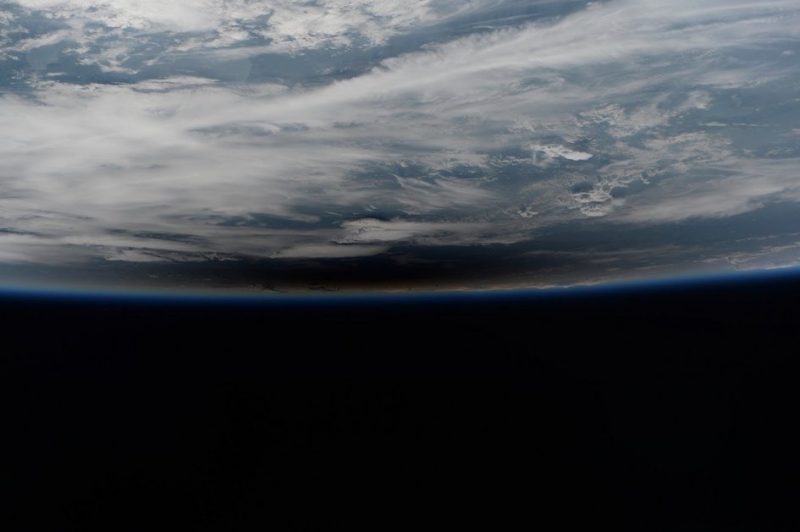
Did the International Space Station (ISS) see a total solar eclipse on August 21, 2017? No. According to NASA’s EclipseScience, during this eclipse, ISS passed through the moon’s penumbral shadow – its lighter, outer shadow – three times. It never passed through the darker, inner portion of the moon’s shadow – called the umbra. Thus ISS astronauts didn’t see a total solar eclipse. Instead, they saw a partial eclipse from their vantage point in space. However, during ISS’s second pass through the moon’s penumbral show, the astronauts did see and capture images of the moon’s shadow on Earth, from the perspective of space. Follow the links below to get more details on how ISS saw the eclipse.
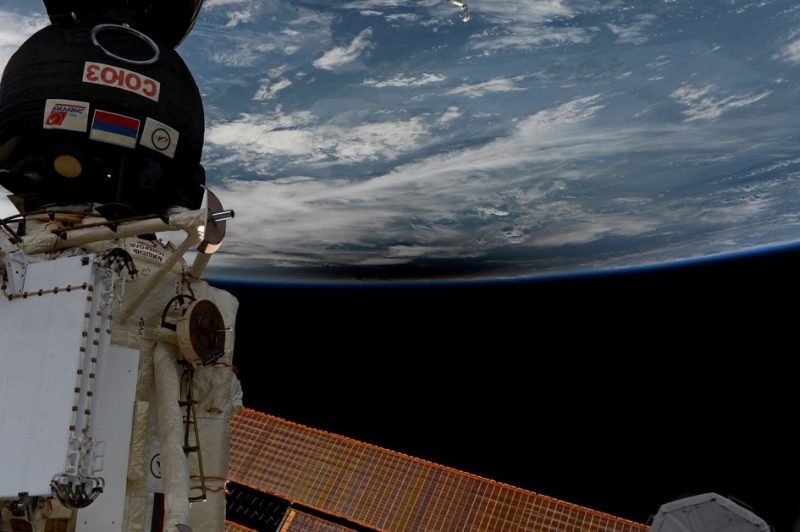

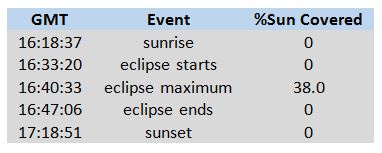
ISS penumbral pass #1. During its first pass through the moon’s penumbra shadow, ISS experienced a partial solar eclipse with 38.0% of the sun covered up at maximum. ISS did not see the moon’s umbra on the Earth’s surface during this pass, or any of the three passes it makes through the moon’s shadow. In pass #1, ISS passed over the western United States and southeastern Canada. At the time of the figure (16:40:33 GMT), the total portion of the eclipse had not yet started for the Earth.
During pass #1, an ISS transit of the sun occurred. In other words, ISS appeared to cross in front of the sun’s face, as seen from a very thin ground track from California through Canada. There’s only one place where you could witness both a transit of the ISS across the partially eclipsed sun and the total solar eclipse later in the morning; it was at the intersection of this transit path with the moon’s shadow path in Wyoming. Click here for a video of the ISS transit across the sun’s face during the eclipse!
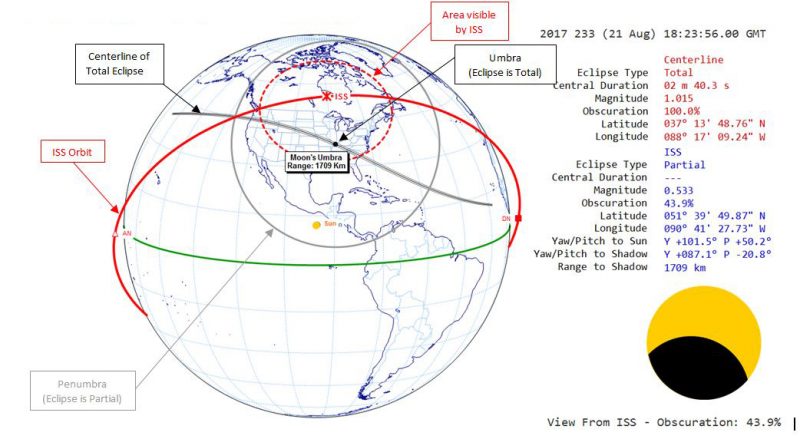
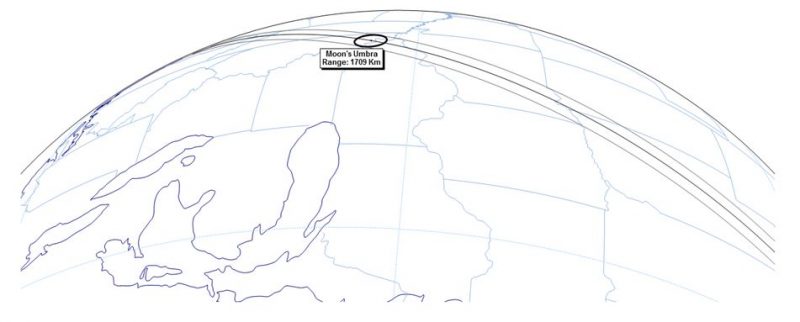
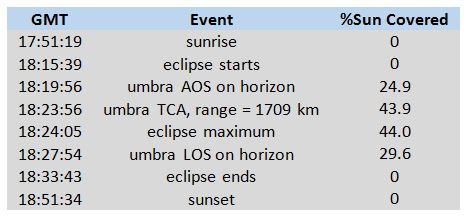
ISS penumbral pass #2. On the second pass of ISS through the moon’s penumbral shadow, those aboard again experienced a partial solar eclipse. This time, at maximum eclipse, 43.9% of the sun was covered. Also, during this pass, the moon’s dark central umbra – the part of the shadow that causes the total eclipse (seen in the image at the top of this page) – was visible from ISS moving through southern Illinois and southwestern Kentucky. At the time, ISS itself was traversing over southern Canada. At the umbra’s closest approach to ISS, the space station was just south of the Hudson Bay while the moon’s umbral shadow was located in southwestern Kentucky some 1,200 miles (1700 km) away. While ISS did not pass near the location of the moon’s umbra, the moon’s umbra was visible near the horizon. The images at the top of this post are from this pass.
While an ISS transit of the sun occurred over a very thin ground track from Washington through Canada, there was not a single location on land where one could witness an ISS transit during this pass and the total solar eclipse. This intersection occurred over the Pacific Ocean.


ISS penumbral pass #3. During its third pass through the moon’s penumbral shadow, ISS experienced a partial solar eclipse with 84% of the sun covered up at the maximum point a few minutes prior to orbital sunset. ISS did not see the moon’s umbra on the Earth surface during this pass, since the umbra had just lifted off the Earth’s surface a few minutes prior to the start of ISS’s eclipse on this pass. However, this pass offered the opportunity to see the sun partially eclipsed as it set into the atmosphere with 26.7% of the sun covered by the moon (assuming no structural blockage by ISS itself). We haven’t seen these images yet, but we’re looking. The figure below represents ISS’s location at maximum eclipse, which occurs a few minutes prior to sunset, as viewed from the sun.
While an ISS transit of the sun occurred over a very thin ground track across Canada during this pass, there was not a single location on land where one could witness an ISS transit during this pass and the total solar eclipse. This intersection occurred over the Pacific Ocean.
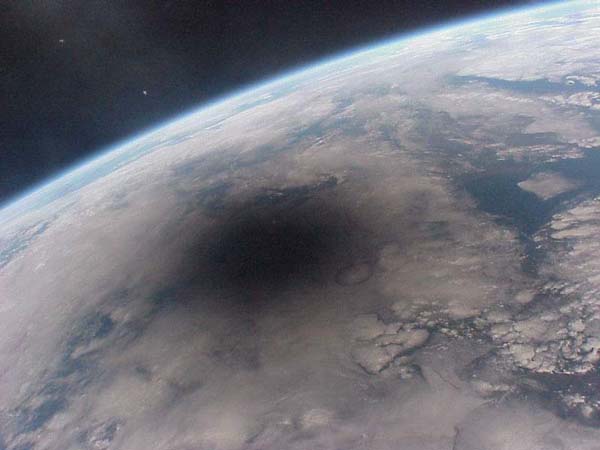
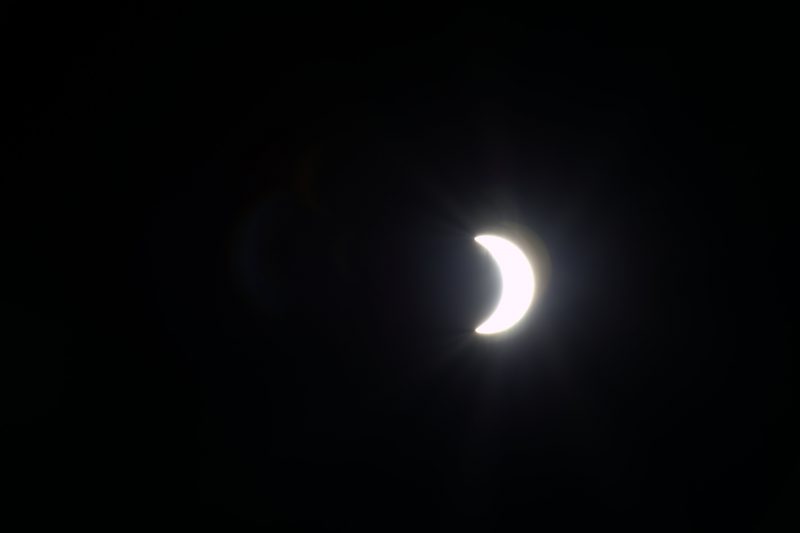
Bottom line: A page of information – based on info at NASA’s EclipseScience – that describes three passes of the International Space Station through the moon’s penumbral shadow during the August 21, 2017 total solar eclipse plus images acquired by astronauts aboard ISS of the eclipse.











